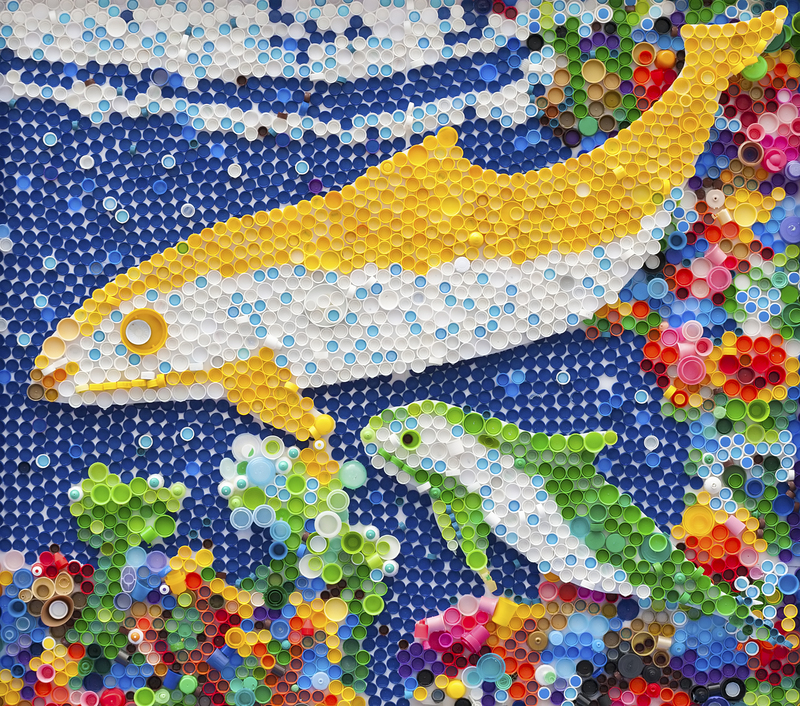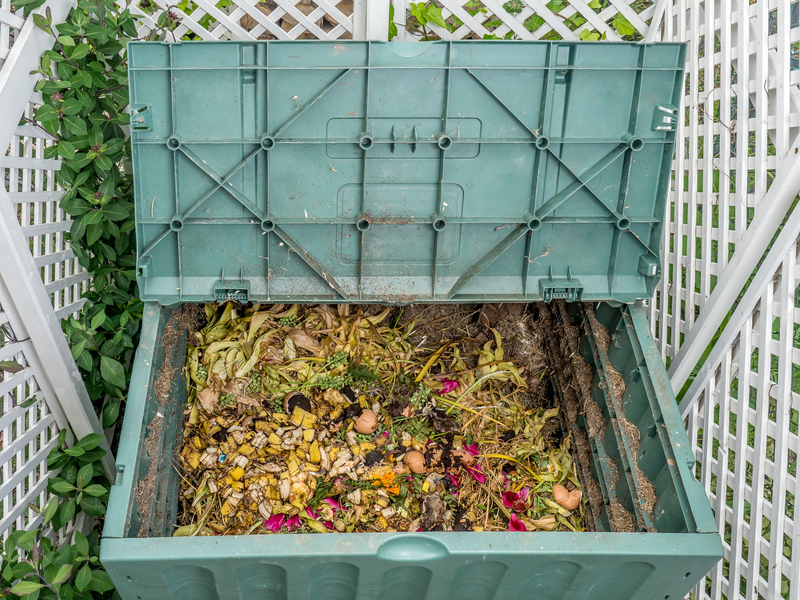Give Old Items a Second Life: Inspiring Upcycling Ideas for Beginners
Do you ever look at worn-out furniture, empty jars, or tired clothes and wonder if they have more life left in them? Upcycling--the innovative act of transforming old items into something new and useful--offers eco-friendly, creative fun for everyone, especially beginners. Giving items a second life reduces waste, conserves resources, and lets your imagination soar.
Whether you're on a budget, seeking sustainable practices, or simply want to add unique charm to your home, upcycling is the perfect hobby to start today. In this comprehensive guide, we'll share simple upcycling project ideas, essential tips, and the many benefits of reviving old belongings.
What is Upcycling and Why is it Important?
Upcycling--sometimes called creative reuse--involves repurposing discarded or unused items and turning them into products of higher value or quality. Unlike recycling, which often breaks materials down, upcycling preserves the original form, reducing energy consumption and environmental impact.
- Environmental Benefits: Upcycling reduces landfill waste and the demand for new resources. Giving old items a new life decreases pollution, saves energy, and helps fight climate change.
- Economic Savings: You can create useful objects or stylish decor from things you already own, saving money on purchases.
- Personal Creativity: Upcycling projects are opportunities to express your unique style and ingenuity.
Upcycling vs. Recycling: What's the Difference?
- Recycling breaks down materials (like plastic bottles or paper) to create new raw materials.
- Upcycling transforms the object directly, preserving much of its original character but with a new function or artistic flair.
For beginners, upcycling is both accessible and rewarding. All you need is inspiration, basic tools, and a creative spirit!

Top Upcycling Ideas for Beginners: Turn Trash Into Treasure
Ready to start? Here are easy and inspiring upcycling projects that anyone can try, from home decor to organization solutions. You'll be amazed at how you can give old items a second life with just a little effort!
1. Transform Glass Jars into Stylish Storage
Don't toss that pasta sauce or jam jar! Wash them out, remove the labels, and turn them into:
- Chic pantry containers: Store dried goods like rice, beans, and pasta.
- Desk organizers: Hold pens, brushes, or small office supplies.
- DIY candle holders: Add colored sand or pebbles for a cozy decor accent.
- Mini planters: Grow succulents or herbs on your windowsill.
Tip: Personalize jars with paint, washi tape, twine, or chalkboard labels for extra flair.
2. Upcycle Old T-Shirts into Reusable Bags
Have faded or stretched t-shirts? Turn them into durable, reusable shopping bags:
- Lay the t-shirt flat. Cut off the sleeves and neckline to create handles.
- Turn inside out, sew or tie the bottom shut.
- Flip right-side-out, and you have an eco-friendly tote!
This simple upcycling project saves money and reduces plastic waste.
3. Cushion Covers from Worn Sweaters
Old sweaters that no longer fit? Turn them into cozy cushion covers:
- Cut the sweater to fit your pillow form, leaving extra seams.
- Sew three sides together inside out; insert pillow, then sew shut or add buttons.
Soft, textured, and full of character--these covers are perfect upcycling ideas for beginners seeking comfort and charm.
4. Pallet Wood Furniture for Rustic Appeal
Wood pallets are often discarded after shipping goods. With basic tools and a little sanding, you can create:
- Bookshelves
- Outdoor benches
- Coffee tables
Remember to check that pallets are safe for indoor use (marked "HT" for heat-treated, not "MB" for methyl bromide).
5. Turn Old Ladders into Shelving Units
Ladders that are past their prime can become stylish vertical storage:
- Prop against a wall for a rustic towel rack or blanket ladder.
- Add planks across the rungs for instant shelves--perfect for plants or books.
Give old items a second chance by letting them shine as practical home accents!
6. Mason Jar Lighting for Atmospheric Spaces
Use Mason jars to create unique lighting:
- Fairy Light Lanterns: Fill jars with string lights for a whimsical touch.
- Pendant Lamps: Fit jars with LED bulbs and hang from the ceiling (use proper electrical fittings for safety).
Add instant atmosphere to patios or bedrooms--all from simple upcycling crafts.
7. Repurpose Drawers into Wall Shelves
Broken dressers? Don't discard the drawers! Paint or wallpaper them, and mount on walls as shadow box shelves to display small objects. Add hooks below for extra utility.
8. Tin Cans as Desk and Garden Helpers
Sturdy tin cans make excellent upcycling material.
- Decorate and use for pens, brushes, or makeup tools.
- Punch small holes for drainage and use as flowerpots or herb planters.
- String together for a DIY wind chime or lanterns.
Why Upcycling is Great for Beginners
If you're new to the world of creative reuse, upcycling projects are ideal because:
- They often use materials you already have--no need for expensive supplies.
- Projects are flexible and forgiving--mistakes can become happy accidents!
- They help build basic DIY skills and confidence, opening doors to bolder projects later.
Ready to Upcycle? Here's How to Start
- Look around your home: Identify items destined for the bin or donation pile. Glassware, old furniture, clothing, tin cans, and cardboard boxes are great candidates.
- Gather basic tools: Scissors, glue, paint, sandpaper, needle and thread, or a simple drill may suffice for most beginner upcycling projects.
- Plan your project: Find inspiration from Pinterest, YouTube, or upcycling blogs. Sketch your idea or make a simple checklist of steps.
- Take your time: Don't rush the process. Enjoy transforming your old belongings at your own pace--it's about fun and discovery!
- Share your results: Show friends, join online upcycling communities, or even sell unique creations for extra income.
Best Materials to Upcycle for Beginners
Start with these easy-to-work-with materials:
- Glass jars and bottles: Endless possibilities for decor and storage.
- Old clothing: Cotton shirts, wool sweaters, jeans, and scarves.
- Wooden furniture: Tables, chairs, dressers, ladders, and crates.
- Tin cans: All shapes and sizes for utility or crafts.
- Cardboard boxes: Perfect for playhouses, organizers, or signs.
- Paper: Used books, maps, or sheet music for artsy collages or wallpaper.
Upcycling Safety Tips
- Clean all items thoroughly before transforming.
- Use non-toxic paints, glues, and finishes--especially for items that touch food or skin.
- Wear gloves, goggles, and masks if sanding, sawing, or using chemicals.
- If electrical work is involved, consult a professional or use ready-made kits for lighting projects.
Advanced Upcycling Ideas (When You're Ready for More!)
- Furniture Makeovers: Repaint or reupholster vintage chairs, tables, or cabinets.
- Denim Patchwork: Repurpose jeans into quilts, bags, or kitchen accessories.
- Door Headboards: Old doors can be sanded and painted to make unique and dramatic bed headboards.
- Wine Cork Boards: Collect corks to create bulletin boards, trivets, or coasters.
- Suitcase Pet Beds: Line a vintage suitcase with a pillow for a chic cat or dog bed.
Where to Find Upcycling Inspiration
- Online platforms like Pinterest, YouTube, and Instagram feature thousands of upcycling tutorials and ideas.
- Join local or online upcycling groups for support, advice, and sharing your creations.
- Browse thrift stores, garage sales, or community swap events for unique items.
- Attend workshops or community upcycling events to learn techniques and meet fellow enthusiasts.
Upcycling and Environmental Impact
Did you know? The average person in the U.S. throws away over 1,500 pounds of trash each year. Most ends up in landfills, contributing to pollution, wasted space, and lost resources. By embracing upcycling, you reduce your personal waste footprint--a significant step toward a healthier planet.
- Repurposed goods mean less demand for new manufacturing--cutting down on water, energy, and raw material usage.
- Upcycling helps raise awareness and inspire others in your network to adopt sustainable habits.
Creative Upcycling Can Save Money
Besides being eco-friendly, upcycling is wallet-friendly:
- Making your own organizers, decor, and furniture from old items means fewer purchases.
- Upcycled gifts are thoughtful and unique--no need for expensive store-bought items!
- Selling upcycled creations can turn into a rewarding side hustle.

Frequently Asked Questions About Upcycling for Beginners
Is upcycling the same as recycling?
No. Upcycling is about creatively transforming items into something better without breaking them down to raw materials, while recycling converts things like plastic or paper back into basic materials.
What household items can be upcycled?
Almost anything! Glass jars, fabric scraps, old clothes, tin cans, wooden furniture, cardboard, bottles, and more. Use your imagination!
Do I need special tools for upcycling?
Most beginner upcycling projects require just scissors, glue, a basic sewing kit, or hand tools. More advanced projects may need drills, saws, or sewing machines.
Can kids participate in upcycling?
Absolutely! Upcycling teaches responsibility, creativity, and eco-conscious habits. Just supervise any project involving sharp tools or hot glue.
Conclusion: Give Old Items a Second Life and Start Upcycling Today!
Upcycling is more than a trend--it's a lifestyle choice that benefits you and the environment. With just a bit of creativity and effort, even beginners can give old items a second life, reduce waste, save money, and craft beautiful, functional objects. Embrace the art of upcycling--you'll be amazed at what you can create.
Get started now: look around your home, pick a project from our list, and see how rewarding it feels to transform the ordinary into the extraordinary. Happy upcycling!